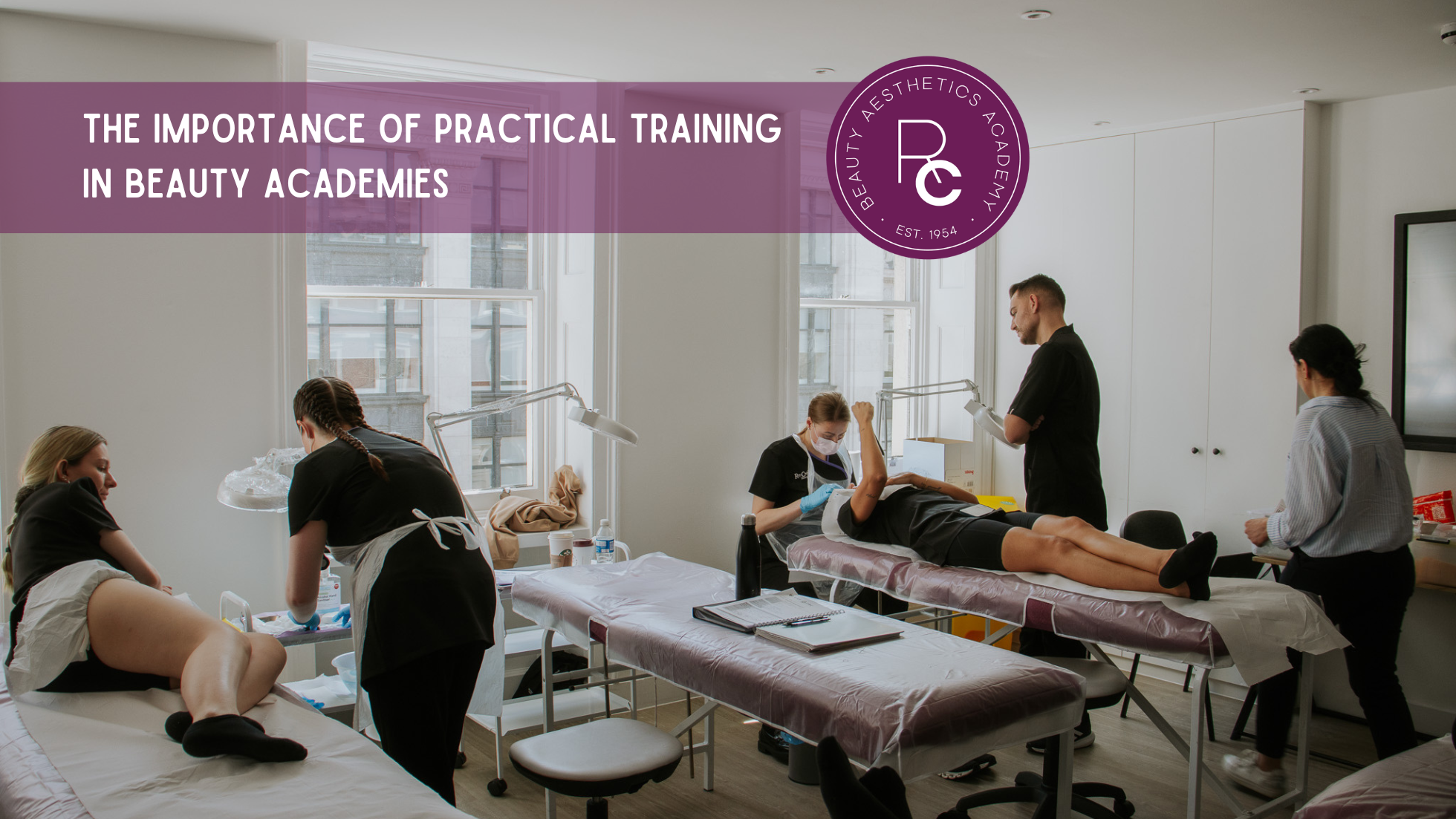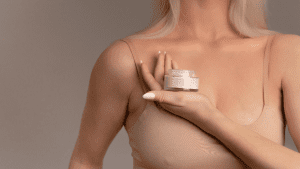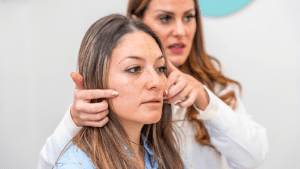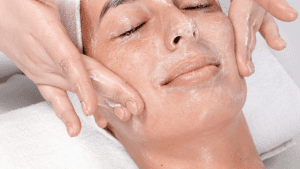
The beauty and aesthetics industry thrives on precision, skill, and a deep understanding of clients’ needs. While theoretical knowledge forms the basis of any beauty professional’s training, real-world experience is what transforms students into confident and competent therapists.
When selecting a beauty academy for your beauty and aesthetic training, it’s important to choose one that integrates practical training with real clients into its curriculum. This hands-on experience is a key factor in your professional development.
Beauty academies that emphasise practical client training set their students up for long-term success, ensuring they are prepared for the challenges and rewards of working in the ever-evolving beauty industry.
In this blog, we have compiled five reasons why this hands-on experience offers many benefits that can’t be replicated through online or theory learning alone.
5 Importance of Practical Training in Beauty Academy
In beauty and aesthetics, real-world experience is just as important as theory. Practical training helps students gain confidence, refine skills, and prepare for a successful career. Here are five reasons why hands-on training is essential.
1) Hands-on Training Builds Confidence
As students delve into the various techniques and treatments in the beauty and aesthetic industry, they first gain a theoretical understanding. This knowledge is then put into practice, first on mannequins or fellow students and eventually on real clients, marking a significant transition from theory to practical application.
Working with real clients adds an element of unpredictability that just can’t be recreated in a controlled classroom environment. Real clients have different skin types, conditions, preferences, reactions and even pain tolerance, leading learners to think on their feet.
For example, a student practising a facial treatment on a mannequin won’t have to deal with sensitive skin reactions or client discomfort. However, when working with a client, the student must learn to adjust their pressure, pace, and product application based on client feedback. As students gain more experience in these situations, they build the confidence required to thrive in the beauty and aesthetic industry.
Practical client training also helps to smooth out those initial jitters that learners can feel when starting to work with actual skin and turn them into trained practitioners who work with skill and confidence. When learners feel confident, it reflects in their work and how they communicate and engage with clients.
Read More – 5 Red Flags to Look for When Choosing an Aesthetic Training Course

2) Gain a Deeper Understanding of Tools, Product Knowledge and Application
Another advantage of hands-on client training whilst studying is its opportunity to further product knowledge and treatment for learners.
As beauty professionals, students must fully understand the various products and tools they use and how they interact with different skin types and conditions. This level of knowledge is crucial for tailoring treatments to individual clients’ needs, and the best way to develop this knowledge is through practical experience!
In the classroom setting, students are taught the basics of product ingredients, science, how to use them, and their benefits. However, when they begin to apply this knowledge in a real-world setting, they will learn to recognise how products can perform under different conditions.
Through practical training, students become familiar with how different products work on actual skin rather than in a theoretical setting. Working with real clients teaches how to adjust product choices, understand how much product to apply, and adjust the treatment based on the client’s individual needs.
The hands-on experience enables a deeper understanding of how products can better or worsen the treatment process, allowing future beauty professionals to make informed decisions that will benefit their clients.
Furthermore, real-world client interaction allows students the experience to recommend products for home use, adding an extra layer of professionalism that clients will appreciate.

3) Cultivate Professional Relationships with Clients
One of the most overlooked yet critical skills in the beauty and aesthetics industry is client interaction. It’s so important that you will find the unit “Client care and communication in beauty-related industries” in almost all accredited beauty and aesthetic courses.
While technical expertise is essential, the ability to build rapport and trust with clients truly sets successful beauty professionals apart. Real-world training with clients provides students with invaluable opportunities to develop these interpersonal skills naturally and authentically to be competent when they start working.
In a classroom setting, students can only practice so much when it comes to client communication. However, working with real clients, they quickly learn the importance of listening to client concerns, asking the right questions and explaining procedures clearly. For example, when conducting a consultation, students must be able to assess the client’s needs and expectations and provide recommendations that are both professional and achievable.
Students learn how to handle sensitive topics with care through real-life practical training. Whether it’s addressing a client’s concerns about their skin condition or managing expectations for a particular treatment, how a beauty professional communicates can make or break the client’s experience. The real-world training helps students refine their communication skills so they are well-prepared to engage with clients respectfully and reassuringly.
Eventually, each practical client interaction teaches learners the importance of professionalism. From maintaining confidentiality to handling client feedback, students can learn the ethical standards of the beauty industry in a hands-on environment. This experience helps prepare them for the complexities of client relationships in the professional world, giving them the tools to build a loyal client base.

4) Build Problem-Solving Skills by Navigating the Unexpected
No two clients are like when working in the beauty and aesthetics industry; treatments can often come with unexpected challenges. Whether it’s a unique skin reaction to a tried and tested product, a treatment that doesn’t go as planned, or a client with unusual needs, beauty professionals must be skilled problem solvers. Practical client training is the perfect environment for students to develop this essential skill.
When students encounter challenges in a practical setting, they must learn to think quickly and adapt their techniques or products to fix the issue. For example, during a waxing session, a student may encounter a client with particularly sensitive skin that reacts to the wax. Rather than sticking to a textbook approach, they must assess the situation and adjust the treatment to minimise discomfort and irritation.
This problem-solving experience is invaluable, as it prepares students for the unexpected situations, they’ll inevitably face in their careers. Not only do they learn how to handle these challenges, but they also gain the confidence to make informed decisions under pressure.
Additionally, practical client training encourages students to lean on their tutors to fix issues, gain advice for future incidents and refine their techniques. The ongoing feedback and guidance from experienced beauty and aesthetic professionals help students improve their problem-solving abilities so that by the time they enter the professional world, they are equipped with the knowledge and adaptability needed to handle whatever comes their way.

5) Learn to Perfect their Craft
Finally, practical training on real clients allows students to sharpen their application techniques and skills. Beauty and Aesthetic professionals require high levels of precision, and the only way to master this craft is through practice on real people. Whether you’re performing facials, administering laser treatments, or even completing a nail design, students must develop a keen eye for detail and a steady hand to ensure the best results!
Practical hands-on training allows students to refine their techniques over time, receiving feedback from their clients and tutors. The hands-on experience helps students develop muscle memory, ensuring that they can perform treatments with accuracy and efficiency in the future.
Furthermore, working with real clients teaches students the importance of customising treatments. Beauty and Aesthetic treatments are not a one-size-fits-all, and students must learn to tailor standard treatments to their clients and their unique skin.

Read More – Why Ray Cochrane Beauty School is the Top Laser Training Centre in London
How Ray Cochrane Ensures Our Students get Practical training
At Ray Cochrane Beauty Aesthetics Academy, we ensure that all our students, regardless of their course, have access to practical, hands-on client training.
When students have completed their theoretical studies and are competent in completing treatments on their classmates, they have the opportunity to work with real clients at our Academy. This approach provides an invaluable bridge between theoretical learning and professional practice. This allows them to put their knowledge to the test on a wide variety of skin types, conditions, and treatments.
At every stage of their practical training, our experienced tutors guide learners closely. Their expert guidance ensures that students feel confident and supported while learning, as tutors can manage unexpected challenges and help students perfect their techniques.
Working directly with many clinics, salons and spas to provide the next generation of beauty and aesthetic professionals, we understand the demand for fully competent therapists who can go straight into the working environment. We ensure that our students work with industry-standard equipment and high-quality beauty products, preparing them for what they will encounter in professional salons and clinics. From laser hair removal to chemical peels, our students gain hands-on experience in the latest treatments, ensuring they stay ahead in the fast-evolving beauty and aesthetics industry.
By the time our students complete their courses, they are more than just theoretically prepared. They are industry-ready professionals with real-world experiences. Our emphasis on practical client training equips students with hands-on skills, adaptability, and the client care expertise required to excel in any beauty or aesthetics career. This level of preparedness is what sets Ray Cochrane graduates apart in the competitive beauty industry.
At Ray Cochrane, practical training is more than a course component—it’s a core part of the learning experience that empowers our students to succeed.
Ready to take the next step in your beauty and aesthetics career? Join Ray Cochrane Academy and gain the practical, hands-on experience that sets our graduates apart. Contact us now to learn more about our courses and how you can get started! Our friendly course representatives are here to help you Monday – Friday 9 am to 5pm, and can be reached at 0203 856 8886 or by email at admission@raycochrane.co.uk.
